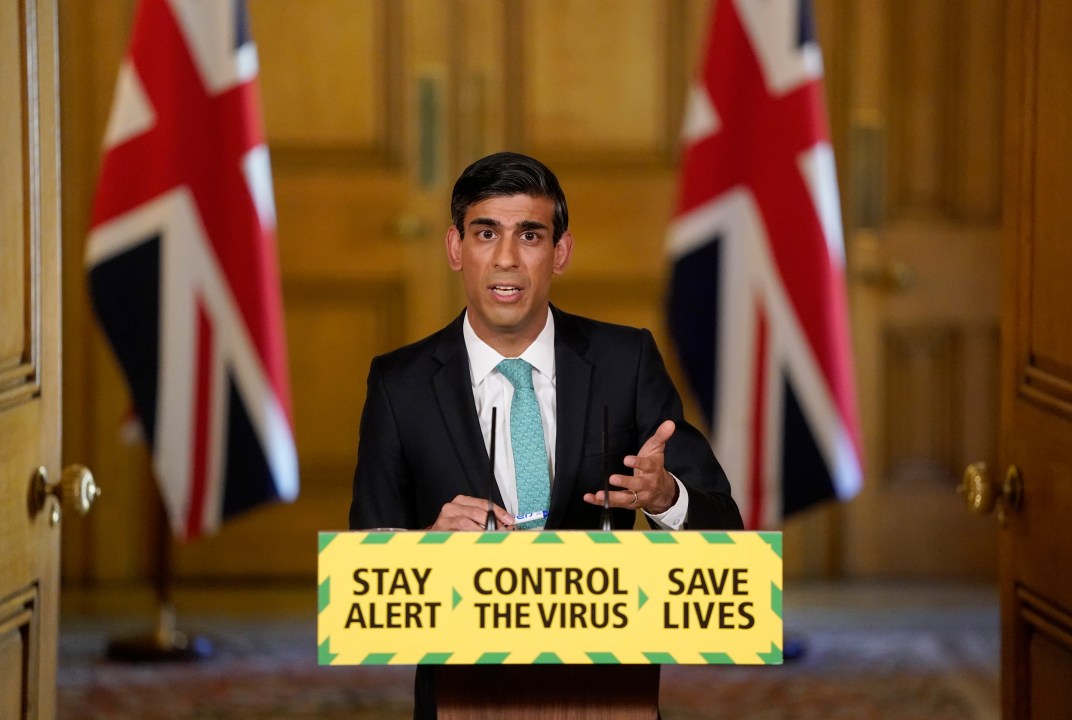A dose of economic reality was administered to the public on Friday evening when Chancellor Rishi Sunak announced how the furlough scheme will be rolled back. But far from a short or sharp shock, Sunak unveiled a plan that scales the scheme back gradually over the next five months, as the government continues to pay 80 per cent of furloughed staff salaries, capped at £2,500, over June and July. Come August, however, employers will be asked to pay National Insurance and pension contributions, 5 per cent of total employment costs. In September, employer contributions will increase to 10 per cent of their employees’ salaries which will then rise to 20 per cent in October, before the scheme comes to a close at the end of the month.
Last time Sunak took to the podium at the daily press conference, he surprised everyone by extending the furlough scheme far more generously than was expected. On Friday, he was also generous, albeit in a more nuanced way: a gradual rollback is perhaps the most the Treasury could offer while balancing out the financial reality that furloughing ‘cannot continue indefinitely’ – it now racks up a monthly bill that come close to matching spending on the NHS, and has been estimated by the Institute for Fiscal Studies to cost upwards of £100 billion on its own. Calls from cross-party MPs to extend further support to the self-employed were also heard and acted on, as Sunak offered a second – and last – round of grant application in August to cover three more months of average profits (also reduced and capped).
The UK has undergone huge economic contraction, possibly its biggest since the Great Depression
The Chancellor’s decision to tiptoe out of the scheme reflects nervousness that unemployment is set to spike. Even minor changes to the furlough scheme are going to result in job losses. A survey from the Institute of Directors found that a quarter of businesses don’t think they can afford to contribute anything to furloughed employees’ wages. This means tough decisions are coming before October when the scheme officially comes to an end. From August, many businesses asked to contribute even a relatively modest percentage of their employees’ wages will find themselves making difficult choices.
While announcing the wind-down of the scheme, Sunak doubled down on its merits and the thinking behind it, arguing that business prospects ‘are better than they otherwise would have been’. Still, the future faced by UK businesses and workforces is bleak: some 8.4 million people have already been furloughed, a number that is likely to rise before applications are cut off at the end of June. A further 2.3 million self-employed workers have applied for government grants, and there’s another wave to come. While some of these people will return to work in the weeks and months ahead, many won’t. The gradual reduction in government support could see a staggered increase in universal credit claims rather than a surge – but regardless of when you tally the numbers, they will still add up.
The UK has undergone huge economic contraction, possibly its biggest since the Great Depression. The furlough scheme, along with other Covid support packages, has shielded some people from feeling the effects of recession acutely, but the pain is setting in. As the UK slowly wakes up its economy, the devastation caused by Covid-19 will become clearer. The country must brace for the lingering consequences of Covid-19 and the lockdown – the likes of which are only starting to become apparent.








Comments